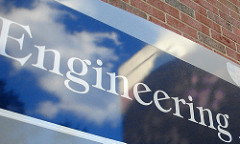Engineering activities
By Mary Bigelow
Posted on 2017-05-28
 Are you interested in enhancing your STEM teaching repertoire? Or in integrating engineering concepts but not sure where to start? There have been some new features added to a free resource which is appropriate for in-school and informal K-12 educators.
Are you interested in enhancing your STEM teaching repertoire? Or in integrating engineering concepts but not sure where to start? There have been some new features added to a free resource which is appropriate for in-school and informal K-12 educators.
The TeachEngineering digital library is an online collection with more than 1,500 engineering curricular materials that were created and tested in classrooms through teacher/faculty partnerships at engineering colleges and funded by the National Science Foundation. The focus of these materials is to support K-12 STEM literacy through the lens of engineering—which involves making real-world connections.
These comprehensive STEM lessons and hands-on activities use engineering to integrate science (life, earth and physical science) and math via hands-on inquiry-based activities that are aligned to NGSS. TeachEngineering’s curricular materials are presented in five different formats: lessons, hands-on activities, units, “sprinkles,” and maker challenges.
The lessons and hands-on activities provide standard components such as learning objectives, correlations to educational standards, background information, activity prep and procedures, vocabulary, engineering connections, embedded assessment activities, and student worksheets and handouts. Units are groupings of lessons and activities on a common theme or topic.
Some of the most popular activities are also presented as sprinkles–60-minute-or-less “tastes of engineering” that are designed for quick prep by teachers and non-teachers and are appropriate for afterschool clubs and other informal environments (They are also available in Spanish).
Maker Challenges are a new feature providing teacher-prompts for open-ended, self-directed challenges that support the popular maker movement. Through these challenges, students tinker and create as they work through the engineering design process.
It’s easy to explore the collection from the home page for the monthly Editor’s Pick, most popular (elementary, middle, and high school levels), most shared, and recently added. You can use the filtering interface to search and browse the collection by topic, format, grade level, subject area, time required, and/or NGSS.
These resources are complete enough that even if you never studied engineering, you and your students can be involved in interesting problem-solving activities that incorporate real-world applications. Many of the activities and units are in the SciLinks database, too.
Photo: https://www.flickr.com/photos/lalunablanca/24455707/
Disclaimer: The views expressed in this blog post are those of the author(s) and do not necessarily reflect the official position of the National Science Teaching Association (NSTA).


